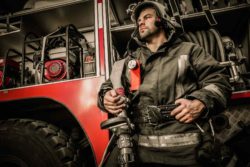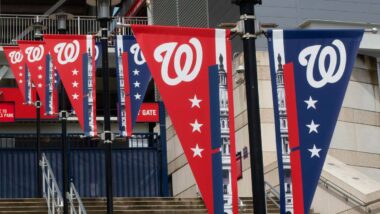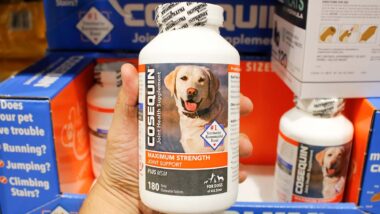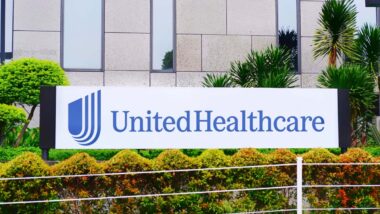Top Class Actions’s website and social media posts use affiliate links. If you make a purchase using such links, we may receive a commission, but it will not result in any additional charges to you. Please review our Affiliate Link Disclosure for more information.

In 2018, the U.S. Congress authorized the government entity to create an organized registry of all firefighters, whether paid or volunteer, retired or still working. As an arm of the Centers for Disease Control and Prevention, the National Institute for Occupational Safety will maintain the registry while monitoring the cancer types and cancer rates of firefighters throughout the country. These results are intended to be made public.
A great emphasis has been placed on the risks firefighters take with every call they attend, especially since the collapse of the Twin Towers after terrorist attacks in 2001.
Firefighters not only are exposed to the obvious risks of smoke and fire, but also face the risks of toxic chemicals that can coat their skin or their lungs, and contaminate virtually every system in the human bodies according to the Guardian.
Creating a registry of which firefighters were exposed to which toxins and the health effects they suffer down the road could help spur the creation of better protective gear.
Firefighters and 9/11 Cancer
A total of 182 members of the New York Fire Department have died of 9/11 cancer or other 9/11-related disease. That death toll is in addition to the 343 firefighters who were killed in the attacks on Sept. 11, 2001. Many others battle chronic respiratory or gastrointestinal issues because of the effects of the clouds of poisons they worked in for days, weeks and months.
Asbestos-related cancers such as mesothelioma can take 20 to 50 years to develop, and many who survived the attacks and helped others escape could see symptoms soon.
According to NBC News, the Memorial Sloan Kettering Cancer Center in New York already has determined that first responders who worked at the 9/11 site have an increased risk of multiple myeloma, and there are some indications they also have an increased risk of breast cancer, even among men.
Multiple myeloma is a cancer of the plasma cells, a certain type of white blood cell in the bone marrow.
One man was 21 years old when terrorists hit the Twin Towers on Sept. 11, 2001. Rob Serra had graduated from the New York City Firefighter Academy just the day before, Sept. 10, 2001. He had never been on the site of a fire, and certainly had never assisted at anything on the scale of the horror that happened that day.
Still, Rob found himself helping dig through building material in thick dust that laid like gooey paste on sweaty faces of himself and those around him. He told NBC News that he remembers thinking the work he was doing at that moment would most likely result in his untimely death.
Rob says he has sinuses inhibited by scar tissue because he has had to have so many polyps removed. He says he also has problems walking, which he attributes to nerve damage most likely caused by exposure to toxins. He fears cancer is next.
Help for Victims of 9/11 Ailments
The U.S. government manages two different programs to help victims and families of victims who have developed cancer and other severe, adverse health effects after the 9/11 attacks.
The World Trade Center Health Program provides coverage for medical treatment, and the Victim Compensation Fund gives financial assistance to first responders and other people who worked and lived in the area of the terrorist attacks at the time.
Navigating the complex and burdensome paperwork and strict deadlines to participate in the 9/11 Victim Compensation Fund can be difficult. An experienced 9/11 Victim Fund attorney can help and ensure you get the maximum compensation available.
If you were present near Ground Zero, generally considered to be Lower Manhattan below Canal Street, between September 11, 2001 and May 31, 2002, and were diagnosed with cancer 4 years or more after exposure (or 1 year or more for blood and bone cancers), you may qualify for compensation.
Submit your information now for a free, no-obligation review of your potential 9/11 cancer fund claim.
ATTORNEY ADVERTISING
Top Class Actions is a Proud Member of the American Bar Association
LEGAL INFORMATION IS NOT LEGAL ADVICE
Top Class Actions Legal Statement
©2008 – 2024 Top Class Actions® LLC
Various Trademarks held by their respective owners
This website is not intended for viewing or usage by European Union citizens.
Get Help – It’s Free
Free 9/11 Cancer Fund Claim Evaluation
If you qualify, a September 11 Victim Compensation Fund attorney will contact you to discuss the details of your potential claim at no charge to you.
PLEASE NOTE: If you want to participate in this investigation, it is imperative that you reply to the law firm if they call or email you. Failing to do so may result in you not getting signed up as a client or getting you dropped as a client.
Oops! We could not locate your form.












